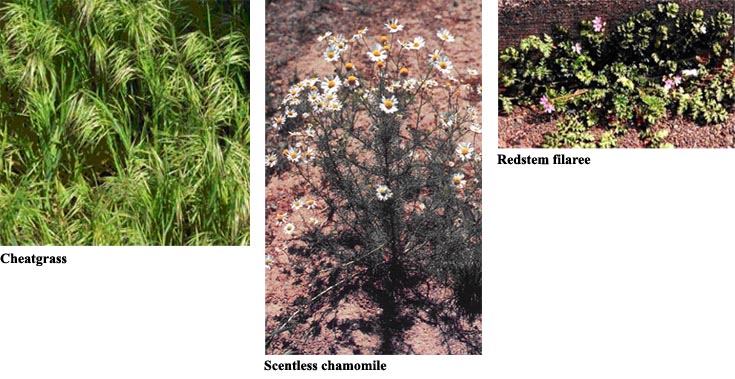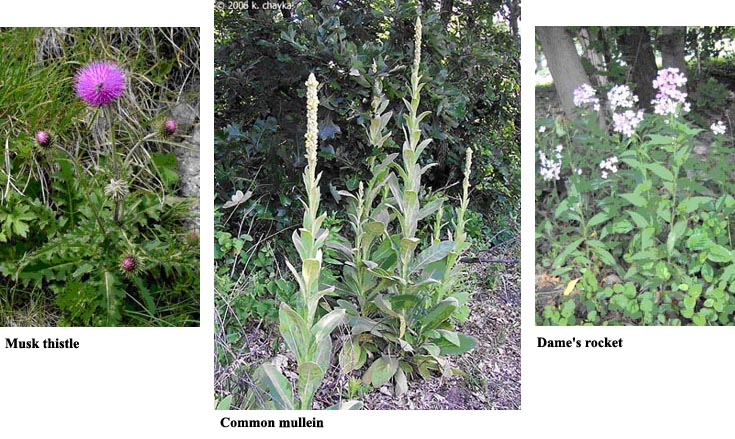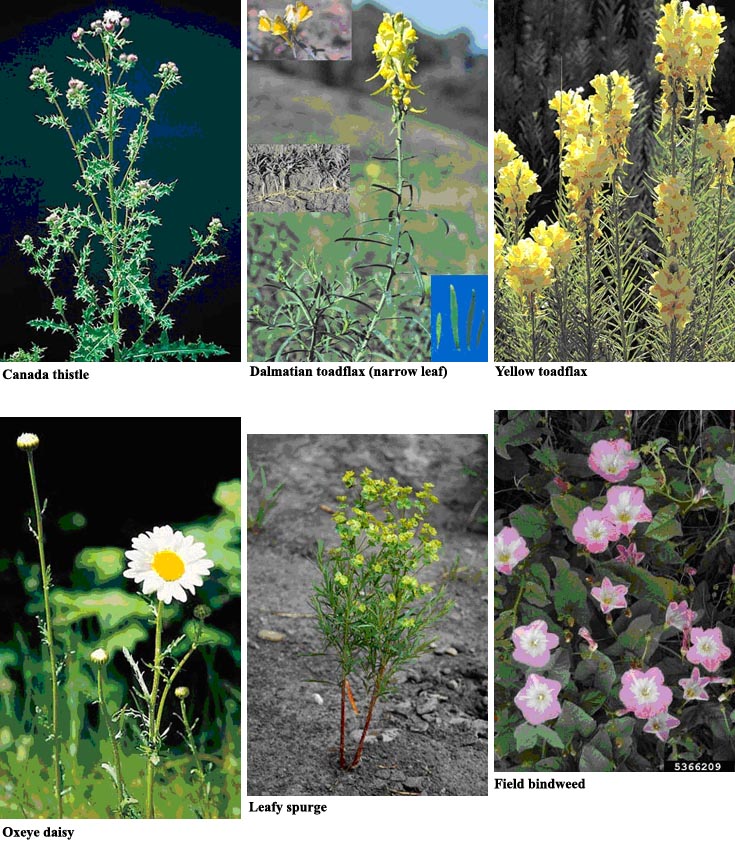How to control weeds
Carpe weedum: Seize the weeds!
(Weed ‘em and reap; leave ‘em and weep.)
By Irene Shonle, Colorado State University Extension
The success of controlling weeds depends on three things – knowing your weeds, knowing which control method to use, and being persistent. In this article, you’ll find the basic information on different methods of control, and how it can be applied to weeds with different life cycles. Have patience – it can take up to ten years to fully control weeds. This is because it can take that long to deplete the seed bank (seeds that are waiting in the soil) – although most of the seeds will be gone in a few years. Also, reseed with a desirable species to prevent new weed seeds from coming into the bare spot.
Methods of control: The method you choose will depend on the biology of the weed (see more on that below).
Cultural control: Changing conditions to make weed invasion less likely
- Increasing turf or landscape density
- Reducing or increasing water
- Increasing or reducing fertilizer
- Decreasing compaction
- Decreasing or increasing sunlight
Pros: This is the best long-term control: you are increasing the conditions for the plants you want to grow at the same time that you are decreasing the conditions for weeds
Cons: Possibly more expensive and time-consuming; control may not be as fast
Mechanical control: Hand-pulling, cutting, mowing (weed whacker), or smothering weeds (landscape fabric, thick mulch)
Pros: Can be quick, inexpensive; environmentally friendly
Cons: Can be slow and expensive; may not be effective (could even be detrimental at wrong time), landscape fabric can be temporary and hard to remove, mulches and fabrics unfeasible for large infestations.
Biological controls: The use of carefully screened insects to attack portions of the weed (i.e., stems, seeds, flowers, etc.)
Pros: Can be an inexpensive, long-term control solution. Fairly environmentally friendly. Little labor involved.
Cons: Not always effective; requires a large population of weeds to maintain insect populations (won’t work in backyards); does not eradicate weeds; insects can sometimes attack non-target plants.
Herbicide control: The use of carefully screened chemicals to disrupt key processes in plants leading to plant death.
Pros: Effective, cost-effective, quick control
Cons: Can be environmentally problematic, must be used properly to be effective (timing, type, application rate, applicator safety), herbicide resistance can develop, can kill non-target plants, may be difficult to find, or require special licensing.
Weed Biology of Gold Hill’s noxious weeds:
Annuals (Cheatgrass, Scentless chamomile, Redstem filaree)

- The seed germinates in the spring (or fall for winter annual), plant develops and produces seed during the summer (or spring for winter annual), dies with killing frost in the fall (or heat of summer for winter annual).
- Key to control is to prevent seed production and to remain persistent until the seed bank has been depleted. Mechanical and cultural controls often adequate for control. Large areas may need to be treated with herbicides.
Biennials (Musk thistle, Common mullein, Dame’s rocket)

- Requires two seasons to complete growth cycle.
- Seeds germinate in spring; the following season, the plant flowers and matures seeds in summer and fall before dying.
- Key to control is preventing seed production, and depleting the seed bank. These plants are easiest to dig in the rosette or early bolting stage. Mechanical and cultural controls often adequate for control. Large areas may need to be treated with herbicides.
Simple Perennials (Spotted Knapweed, Bouncingbet, Common tansy, Sulfur cinquefoil)

- Possess a root crown that produces new shoots every year. Depend upon seed production to spread; plant will come back every year.
- Key to control: Prevent seed production, kill parent plant, deplete seed bank. Mechanical and cultural controls sometimes adequate for control, but biological or chemical controls may be necessary. Large areas may need to be treated with herbicides.
Creeping Perennials (Canada thistle, Yellow and Dalmatian toadflax, Oxeye daisy, Leafy spurge, Field bindweed)

- Propagate by seed, creeping aboveground stems (stolons) and/or creeping underground parts (rhizomes).
- Key to control: These are the hardest weeds to control. They often have very deep root systems, and pulling can sometimes release adventitious shoots (especially if the plant is well established). Prevent from going to seed, kill parent plant. This often will take several years to fully kill off the parent plant. Often, herbicides will need to be used in conjunction with other methods.